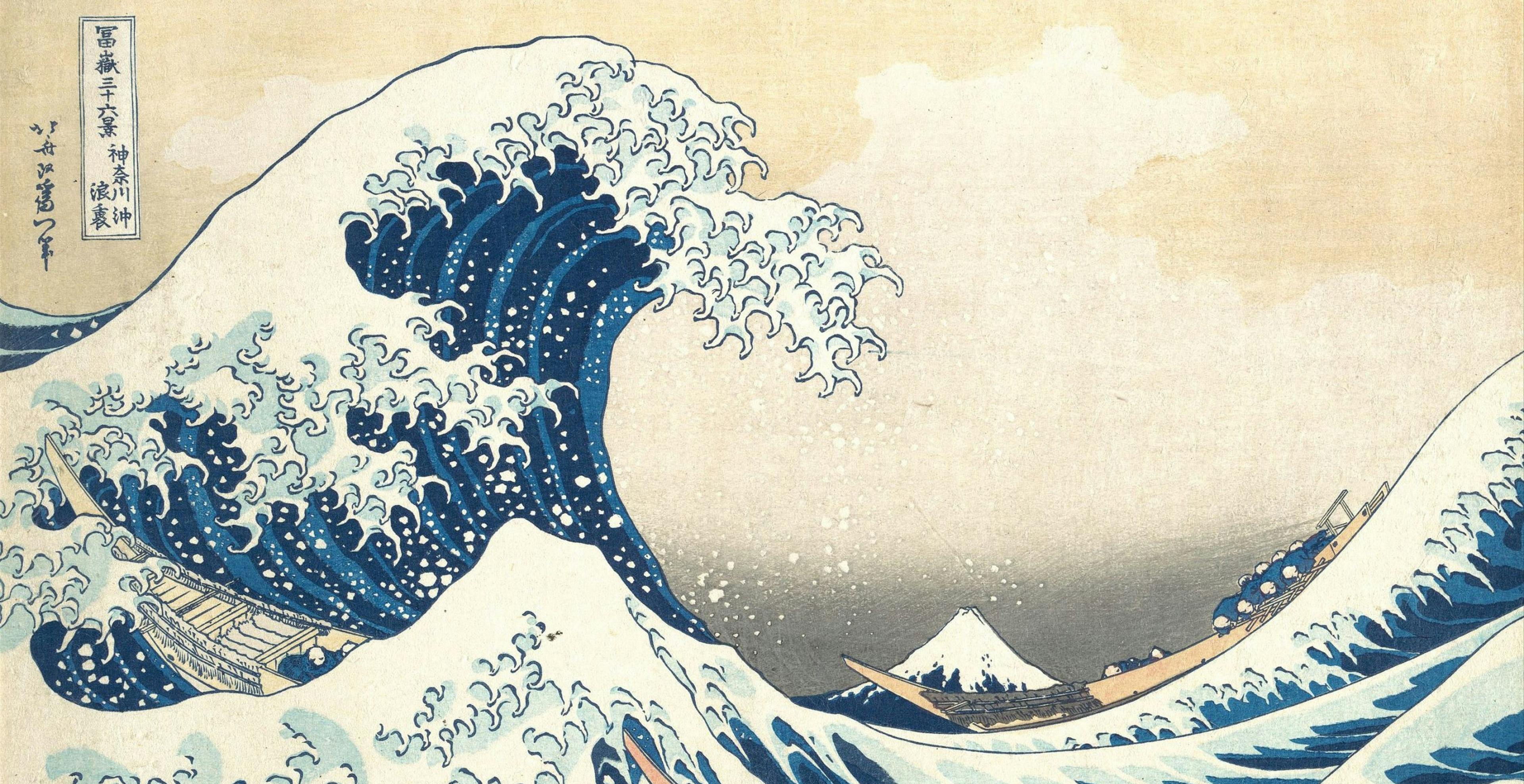There are some common elements in Zen art that I find in my own work: attempting to achieve or express more through less, for example, or the exploration of artificial spatial constructs. I think the core of these aesthetics is an interplay between the experienced reality of daily life and the often simplified world portrayed through art – an interplay between the world seen by our bodies and the world felt by our Buddhist minds.
Using Less, Achieving More
A piece of art should communicate something to the viewer, but in some Zen aesthetic, less is used. A piece might limit detail, use less color, or use simplified shapes–all methods of abstracting away the extraneous. Similarly, the artist might limit the extraneous by limiting themselves in medium, technique, or scale. But to me, the core of this concept is communicating more without using more to do so. Speaking to the spirit, calling more to mind, or connecting with a viewer’s emotional state can often be achieved by a talented artist, but when ‘less’ is involved and present to grab the viewer, it can be missed. For this, an attentive viewer is crucial. An installation of a crumpled-up piece of paper casting a shadow on the wall might easily be missed by a rushing visitor, but if someone gives the art directed attention, then they might see that the shadow looks like a face in ecstacy (of some sort or another!).
The Zen practice of drawing ensō, is a nice example of this. By quick glance, it’s a circle. By longer glance, it’s a rough circle typically made by a single brushstroke of black ink on paper. But by true appreciation, it’s the memory of a moment of pure expression and little inhibition by the practitioner… It’s still a circle made of a simple brushstroke on paper, but it can communicate much more.
Artificial Space – Abandoning the Reality of our Senses
From a biological standpoint, our senses help us understand the physical environment around us, but they are imperfect. Take sight for example: it’s slow. By the time a baseball rockets out of a pitcher’s hand, it’s cruising toward a batter faster than they could visually track the ball with their eyes. Our mind plots a likely trajectory for where the batter thinks the ball will be, and they swing. Sometimes they hit, sometimes they miss, but it’s not a craps shoot, it’s the experience they’ve gained through the game that helps them create the mental model to predict where the ball will be. In the same sense, our mind is relied on to ‘complete’ our sensual experiences, and in reality, we don’t have to precisely sense the real world to be able to navigate it. You can extrapolate this further into the realms of Buddhist illusion, but it’s not necessary to illustrate the point, so I won’t!
In a lot of Zen art, an attempt to recreate this illusory world isn’t undertaken. Instead, an artificial space is constructed and related. Why try to precisely show the proper depth between foreground and background, when that depth isn’t the ‘reality’ of the subject. Instead, the ‘reality’ of the subject is often explored, and a lot of the details that might find themselves into non-Zen art are left out. For an example of this in particular, look at Under the Wave off Kanagawa by Katsushika Hokusai (the piece is often called The Great Wave).

Presented in a group of pieces “Thirty-Six Views of Mount Fuji” the image is sparse of reality. Mt. Fuji in the background is mimicked by a wave in the foreground–or is it? Is that really Mt. Fuji or just a stylized wave? Three boats are arranged on the waves, while the great wave crests. There’s no shoreline, and there’s barely any features on the people on the boats. There’s a cloud, there’s white, blue, gray, tans, and a great, impressive wave that you can taste the salt, hear the crash, and smell. To me, not only is it focusing on the reality of the subject without worrying about the detail, it’s also doing more with less. It’s a frightful, and delightful, image to come across, and as a woodblock print, the technique was quite limited by today’s standards.
Simple, Serene, and Sublime
The essence of Zen aesthetic to me is simplicity, often paired with the serene, creating the sublime. No, the great wave of “The Great Wave” may not be serene, but I believe the image to be. And I find it sublime, too. Sublime can describe something majestic, or something of high worth, typically moral or spiritual worth. That wave is definitely majestic, and when you consider that Zen has roots in Taoism which has roots in Naturalism, one could say that there’s a raw spirituality presented in the image too.
In my own work, I find myself using these kinds of aesthetics over and over. As an old example, I made a film once where I connected a brushstroke to dancer’s movement to smoke from incense. The image was abstracted and I used outdated technology to create the imagery, but the completed film communicated much more. It explored notions about the fluidity of serene human movement and it toyed with the presented space and scale of both the dancer and smoke. It surprised the viewers who looked beyond the black and white forms when ink turned into smoke turned into dancer, and back. My new work continues in this aesthetic. Often my images are serene and are created with self-imposed limitations. I always strive to communicate more, but I must hope for an attentive audience to fully realize that dialogue.
